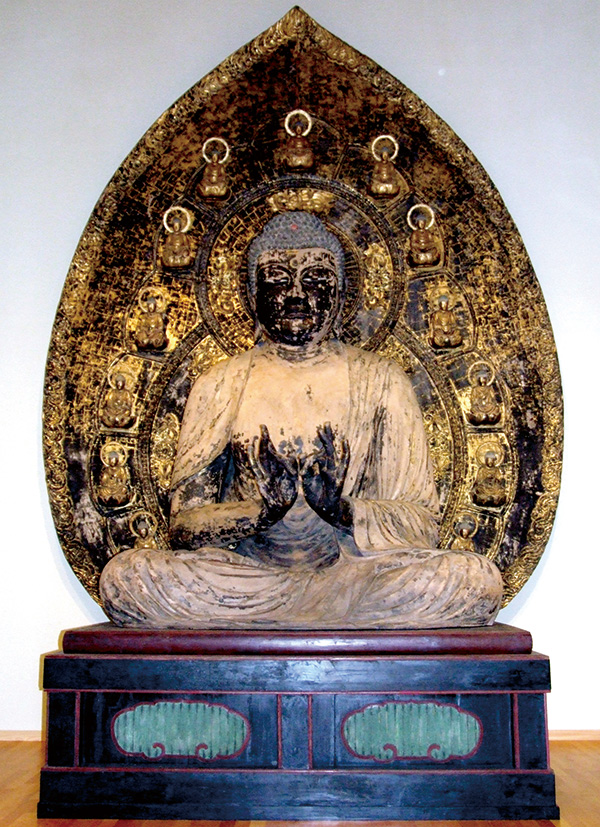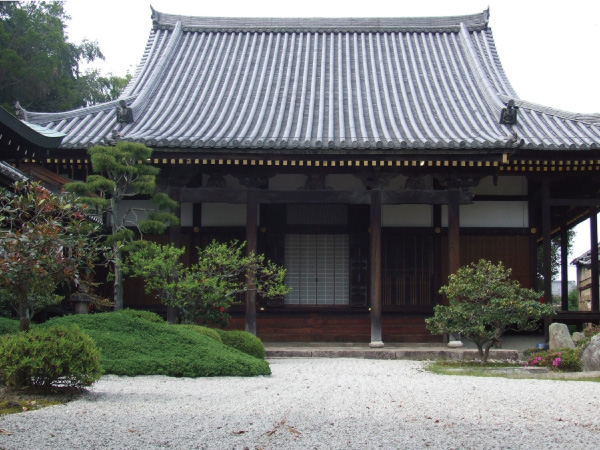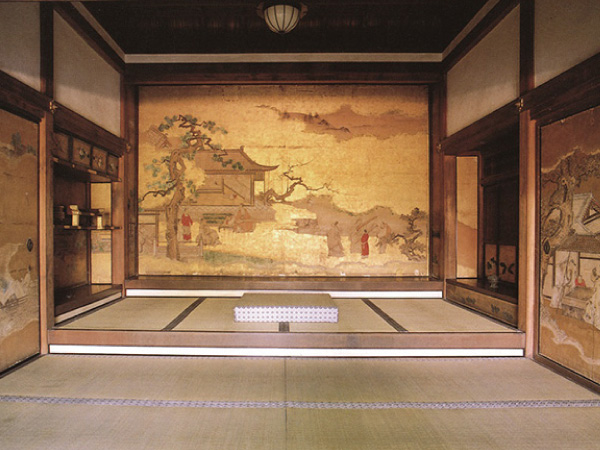Shoboji Temple
- Main Hall
- Ohojo (Larger Abbot’s Quarters), Jodan no Ma Room
Shoboji was established in 1191 as the memorial temple of the Shimizu family by an ancestor who was a
retainer of Minamoto Yoritomo (1147–1199), the founder of the Kamakura shogunate. From 1546, the
temple was also singled out by decree of Emperor Go-Nara (1497–1557) to pray for the safety and
prosperity of the country. Today, Shoboji is a well-preserved example of seventeenth-century temple
architecture with noteworthy statues, paintings, and scenic gardens.
The temple benefited greatly from the generosity of Okame no Kata (1576–1642), a daughter of the
Shimizu family who became a consort of Tokugawa Ieyasu (1543–1616), the first Tokugawa shogun. A local
legend claims that Okame caught Ieyasu’s eye when he saw her lift a heavy tub in which she had been
bathing her child to make way for the shogun’s procession. After Okame bore Ieyasu a healthy son, she
gained the standing to help support her family temple and secure patronage from the powerful Tokugawa
shogunate.
The main hall, the larger abbot’s quarters, and the karamon gate were built with donations from Okame
in 1630 and are nationally designated Important Cultural Properties. The main hall houses a statue of
Amida Buddha from the Kamakura period (1185–1333) as the principal object of worship, and Buddhist
memorial tablets for Okame and her Tokugawa descendants are also kept here. The hall’s wooden interior
retains much of its original colorful appearance, including paintings done by one of the artists who
worked on Nikko Toshogu, the lavish mausoleum complex of Tokugawa Ieyasu. The nameplate on the
building was carved based on the calligraphy of Emperor Go-Nara himself.
The larger abbot’s quarters and the drawing room next to the main hall contain classical Chinese and
nature-themed paintings on sliding doors, and the rear garden of the temple is a Place of Scenic
Beauty designated by Kyoto Prefecture. A large statue of Amida Buddha that once was enshrined in the
octagonal Hakkakudo hall nearby was moved to the Ho’unden hall at Shoboji for safekeeping in 2008.
The temple is usually not open to the public, but visiting is possible several times
a year on special occasions.

Statue of Amida Buddha
The Ho’unden hall of Shoboji Temple houses a large statue of Amida, the Buddha of Immeasurable Light
and Life. Amida is portrayed seated in the lotus position with a serene expression, both hands held in
front of the chest in a symbolic gesture (mudra) of teaching. The statue was carved in the Kamakura
period (1185–1333) and is a nationally designated Important Cultural Property.
The statue measures 2.8 meters in height and is made of Japanese cypress. Amida’s body was once
covered with gold leaf on lacquer, and the robes were colorfully painted. The halo (4.8 m) features 13
small Buddhist images, curling clouds, and other decorative elements, and still bears traces of gold
foil. The statue does not have the creator’s signature, but based on its style researchers suggest
that it could be the work of Kaikei, a renowned Kamakura-period sculptor.
This statue of Amida is one of the rare surviving Buddhist sculptures from the long period when
Iwashimizu Hachimangu was a shrine-temple complex practicing syncretic Shinto and Buddhist worship.
The statue was originally enshrined at a vermilion octagonal hall called Hakkakudo within the complex.
However, when the Meiji government ordered the separation of Shinto and Buddhism in 1868, all
Buddhist-related objects had to be removed from Iwashimizu Hachimangu. To save Hakkakudo and the
statue, a retired chief abbot of Shoboji had them moved to another location atop an ancient burial
mound near the temple in 1870. In 2008, the statue of Amida was transferred to Shoboji’s Ho’unden
hall, which was built for its protection and preservation.



